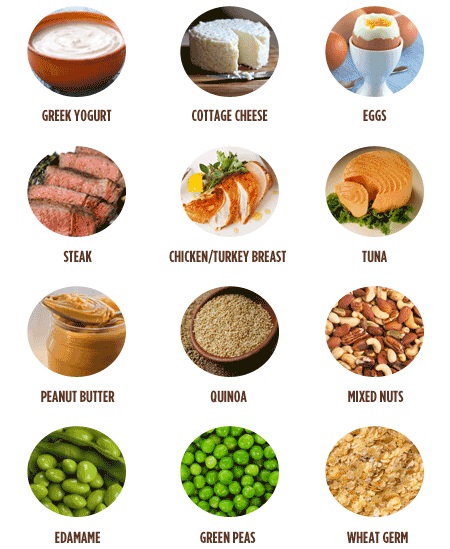
If you didn’t read Part 1, click here .
An egg is an excellent source of protein and its protein is so good that the egg is used as a basis of comparison to evaluate the protein quality of other foods. The egg has an arbitrary value of a « perfect » 100% :
| Food | Protein rating |
| Eggs (whole) | 100 |
| Fish | 70 |
| Lean beef | 69 |
| Cow’s milk | 60 |
| Brown rice | 57 |
| White rice | 56 |
| Soybeans | 47 |
| Whole-grain wheat | 44 |
| Peanuts | 43 |
| Dry beans | 34 |
| White potatoes | 34 |
In the table, there is the value of whole eggs and it’s done on purpose. There is a fashion that consists only of eating the egg’s white because the yellow contains fat and cholesterol (which the egg’s white doesn’t have). The problem is that the egg’s yellow contains as much protein as the egg white and the majority of the vitamins and minerals of the egg.
In the table, you can see that rice, potatoes and beans give less usable protein than eggs and fish. It’s because that they have few essential amino acids. However, you can combine foods that have little useful protein so that the mix of all this gives you the amount of usable protein you need.
With this combination of feeds that have little usable protein, adding a complete protein food makes an excellent meal.
This combination of food with little usable protein is convenient because these are foods that are generally low in calories and fat, which is not the case for many complete protein foods. When you try to get as much muscle as possible with less fat, it helps a lot. You can also have fat-free protein with supplements.
In Part 1, I said that foods with little usable protein devoid of some essential amino acids, that’s why you have to have a special combination with food to make up for that lack. In « Diet for a small planet » by France Moore Lappe, the following combinations are recommended :
Grains plus Seeds
- Breads with added seed meals
- Breads with sesame or sunflower seed spread
- Rice with sesame seeds
Grains plus Milk Products
- Cereal with milk
- Pasta with milk or cheese
- Bread with milk or cheese
Grains plus legumes
- Rice and beans
- Wheat bread and baked beans
- Corn soy or wheat-soy bread
- Legume soup with bread
By remembering these food categories, you will be able to combine your foods to have the maximum protein available for use. You can also read a nutritional guide to know which of the 8 essential amino acids is missing in a food to be more precise, but with these food categories, it’s easier.
You just have to calculate the amount of protein you need per day, apply what you just read and reach your goals.
Subscribe to my newsletter and share this article if you think it can help someone you know. Thank you.
-Steph
P.S. If you’re in Miami and you like Caribbean food, go to my cousin’s bistro to eat Haitian food, click here .